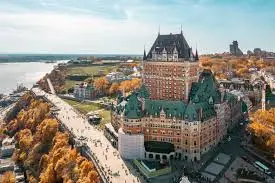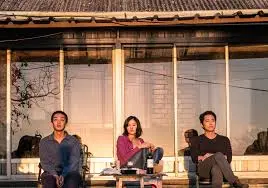Introduction: From Screen to Suitcase — How K-Dramas Spark Travel Dreams

Let’s face it, we don’t only watch Korean dramas for their captivating storylines or their endearing protagonists. Every scene feels like a postcard because to the picturesque surroundings, quaint cafes, beach roads, and mountain temples. These locales are used for more than just the movie. Nope, they wind up on our lists of places to visit. Many of these charming locations have become must-visit locations for fans worldwide due to a phenomenon known as Korean drama tourism.
Welcome to the world of K-drama tourism — where fans follow in the footsteps of their favorite characters. In this article, we’ll unpack how Korean dramas are driving real-life travel trends, boosting local economies, and transforming quiet towns into international hotspots.
Hallyu: The Korean Wave That Keeps Spreading

What Is Hallyu?
Hallyu (한류) — aka the Korean Wave — refers to the global spread of Korean culture, including music (K-pop), food, fashion, and of course, dramas.
K-Dramas at the Core of Hallyu
While BTS and BLACKPINK made waves in music, it was K-dramas like “Winter Sonata,” “Descendants of the Sun,” and “Crash Landing on You” that quietly set the tourism wheels in motion.
Why K-Dramas Make People Travel

1. Emotional Connection
When a viewer cries over a breakup at a bus stop or smiles at a first kiss on a bridge, that location becomes special. It’s no longer just a bench — it’s the bench. This emotional connection is at the heart of Korean drama tourism, where fans seek out real-world places that brought their favorite scenes to life. These locations transcend mere filming sites; they become cherished destinations, embodying the stories and emotions that captivated audiences.
2. Visual Storytelling
K-dramas show Korea through a cinematic lens. Cherry blossoms in spring? Check. Snow-covered alleys in winter? Double-check. The aesthetic appeal is hard to resist.
3. “I Want to Be There” Syndrome
We don’t just want to watch the story unfold. We want to walk the same streets, sip coffee at that same cafe, and take selfies at the exact beach where romance bloomed.
Top Korean Dramas That Boosted Tourism

1. Winter Sonata (2002) – The OG Tourism Magnet
Nami Island saw a surge of tourists from Japan and China after this drama aired. It became the ultimate romantic getaway.
2. Goblin (2016) – Bringing Quebec and Jumunjin Beach to Life
Jumunjin Breakwater (where Kim Shin and Ji Eun-tak had their iconic umbrella scene) became a viral tourist spot overnight.
3. Crash Landing on You (2019–2020) – From Switzerland to Seoul
People didn’t just visit Korean locations — they started flying to Switzerland to see the bridge where Captain Ri and Se-ri met.
4. Itaewon Class – Shining a Light on Local Districts
The once-underrated Itaewon neighborhood is now buzzing with foodies and drama fans.
5. Twenty-Five Twenty-One – Nostalgic Spots Go Viral
Even retro places like old bookstores and vintage-style cafes saw a spike in foot traffic.
Real Locations, Real Impact
Increased Tourism Revenue
Restaurants, guesthouses, souvenir shops, and transportation services all benefit. Local economies thrive when a drama hits big.
Job Creation
From tour guides to vendors, the ripple effect of drama-based tourism provides jobs, especially in rural or lesser-known areas.
Global Fan Tours
Travel agencies now offer K-drama location tours — full-day or multi-day packages for fans to visit iconic scenes.
Types of Filming Locations That Attract Tourists
1. Cafes and Restaurants
Example: Dal.komm Coffee gained popularity after appearing in “Descendants of the Sun” and “DOTS.”
2. Historic Palaces
Places like Gyeongbokgung Palace and Changdeokgung frequently appear in period dramas like “Moon Embracing the Sun.”
3. Natural Landscapes
Mountains, beaches, islands — all showcased in HD. Think Jeju Island, which is practically a K-drama character in itself.
4. City Streets and Bridges
Cityscapes from Seoul, Busan, and Incheon have all served as scenic backdrops.
The Role of Social Media in Travel Decisions
Instagram-Worthy Spots
Fans post photos at filming spots using hashtags like #CrashLandingOnYouLocation or #GoblinStairs, turning locations into viral landmarks.
YouTube Vlogs and TikToks
Influencers and travel vloggers create K-drama travel guides, which inspire even more visits.
How South Korea Is Embracing K-Drama Tourism
Government Support
The Korea Tourism Organization (KTO) actively promotes filming locations on its official site and partners with productions to prepare for future tourist waves.
Film Set Preservation
Some sets, like the Dae Jang Geum Park, are preserved for tourists to walk through and explore.
K-Drama Tour Packages
Tour companies now offer Hallyu-themed itineraries, complete with costume rentals and drama reenactments.
Challenges of K-Drama Tourism
Overtourism in Small Towns
Too many tourists can overwhelm small towns and disrupt local life.
Preservation vs. Access
Some places can’t handle large crowds and need restricted access, even if they’re fan favorites.
Authenticity Dilemma
Some fans expect filming spots to look exactly like the drama — which isn’t always the case in real life.
Solutions and Responsible Tourism
Spreading Tourist Flow
By promoting multiple filming spots, authorities prevent overcrowding in one location.
Eco-Friendly Travel
Fans are encouraged to leave no trace, support local businesses, and respect the sites they visit.
Why This Trend Isn’t Going Anywhere
Streaming = Global Reach
With platforms like Netflix pushing K-dramas globally, new fans are discovering Korea every day — and planning their future trips.
Emotional Tourism
This isn’t just sightseeing. It’s about visiting places that moved you, made you cry, made you dream.
K-Culture Obsession
From food to skincare to fashion, Korean culture is everywhere — and dramas are the glue that brings it all together.
Conclusion: From Fiction to Footsteps
K-dramas aren’t just storytelling masterpieces. They’re cultural bridges, turning viewers into travelers. From seaside benches to mountain temples, every iconic scene holds the power to inspire a real-life journey. This global wave of Korean drama tourism proves that fiction often leads to footsteps — and sometimes even full-blown vacations. So next time you’re bingeing your favorite K-drama, don’t be surprised if you find yourself searching for flights to Seoul.
FAQs: The Impact of Korean Dramas on Tourism in Filming Locations
1. What are some famous K-drama locations fans can visit in Korea?
Popular spots include Nami Island (“Winter Sonata”), Jumunjin Beach (“Goblin”), and Itaewon (“Itaewon Class”).
2. Do Korean dramas really boost local economies?
Yes! Many areas experience increased income through tourism, hospitality, transportation, and local shopping.
3. Are there official K-drama tours available?
Absolutely. Several travel agencies and even the Korean Tourism Organization offer guided K-drama filming location tours.
Going Braless at Work: Breaking Boundaries and Redefining Comfort
Korean Celebrities Who Have Launched Successful Fashion Lines
4. What should fans keep in mind when visiting these locations?
Be respectful of local rules, avoid littering, and understand that some places may look different from the show due to editing or seasonal changes.
From Support to Strain: The Unseen Costs of Agreeing to Disagree
Celebrity Suicide:Exploring Mental Health Crises Among Celebrities
5. Can international fans access all filming sites?
Most filming locations are public or turned into tourist attractions. However, some private properties or studios may have limited access.


